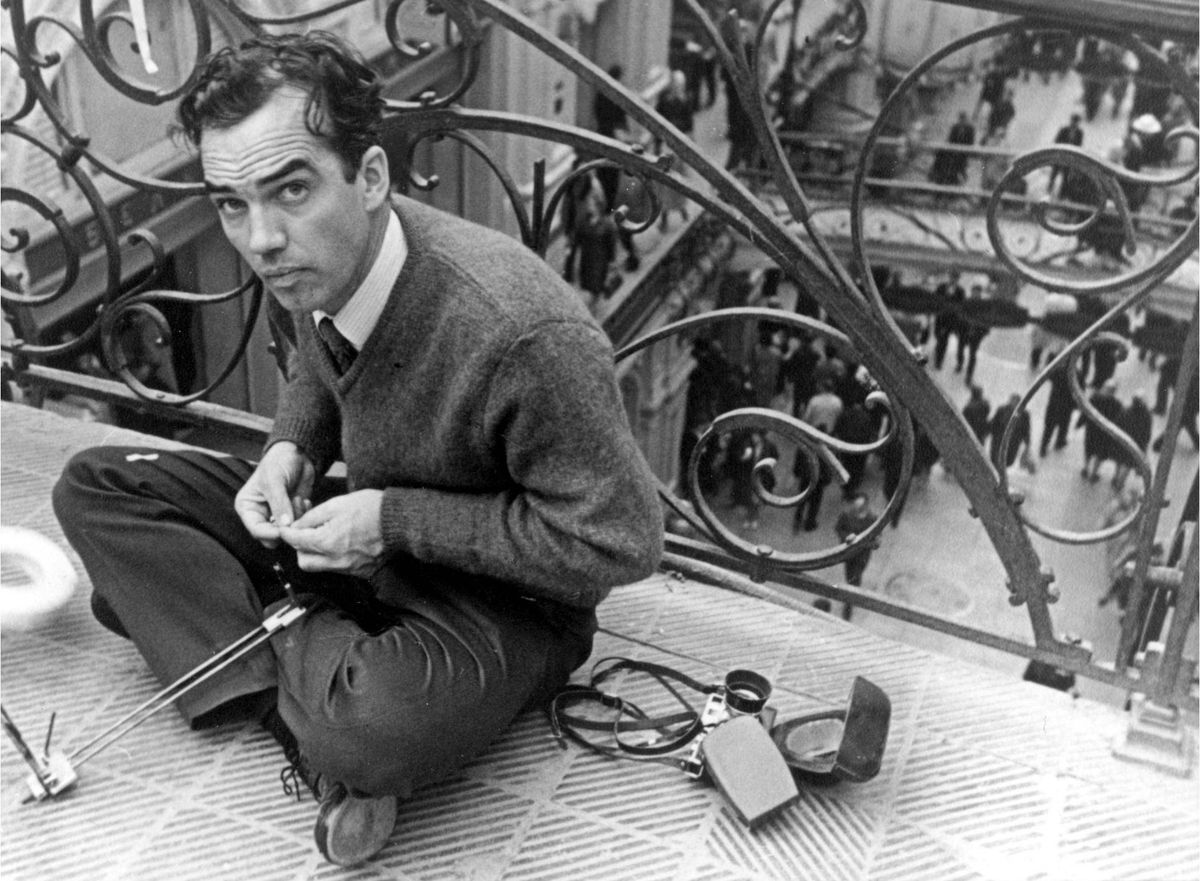 Full Name:
Full Name:Colin Low
Date of birth:24/07/1926
Date of death:24/02/2016
Birthplace:Cardston, Alberta, Canada
Biography
Colin Low was a Canadian animator, documentarian, and film technical inventor who held various roles in his long-standing association with the National Film Board of Canada (NFB). Low was known as a father of Canadian documentary filmmaking and was involved in over 200 productions in his over six-decade career.
Family and early life
Low was born in Cardston, Alberta, to Gerald and Marinon Low, a family of ranchers and members of the Church of Latter-Day Saints.
Low met Eugénie (Jean) St. Germain in Montreal during the 1940s, and the couple subsequently married in 1947. The couple’s three sons, Stephen, Ben, and Alex, joined the film business.
Low studied at the Banff School of Fine Arts and the Calgary Institute of Technology (now the Southern Alberta Institute of Technology). During his studies at the Calgary Institute, one of his teachers encouraged him to send his portfolio to the NFB, where he was accepted in 1945. Norman McLaren hired Low and placed him under the mentorship of George Dunning and Evelyn Lambart. During this period, Low contributed to animated films like Cadet Rousselle (1947).
Career outline
In 1948, Low spent a year traveling and studying animation in Europe (specifically Stockholm). He returned to Canada and the NFB in 1949. He was promoted to director and then head of Unit B’s animation studio in 1950, overseeing a series of historical films. Unit B included both animators and documentary filmmakers.
Low returned to Alberta for a short period with Wolf Koening (also in NFB’s Unit B), where they teamed up to create Corral (1954), a study of a cowboy training a wild mustang. Corral broke NFB’s traditional narration style and won a documentary prize at the Venice Film Festival. They followed their successful partnership by co-directing City of Gold (1957), about the mining city of Dawson City, Yukon, that integrates live-action footage with animation camera panning and zooming techniques on historical images. The camera technique inspired American documentation Ken Burns with the camera technique named “the Ken Burns effect.”
In 1960, Low and Roman Kroitor co-directed Universe (1960), which utilized 3-D models for a realistic animation style. The film inspired Stanley Kubrick’s 2001: A Space Odyssey (1968). Although Low was asked to work on 2001: A Space Odyssey, he was already co-directing In the Labyrinth (1967), which utilized 35mm and 70mm film projected simultaneously on multiple screens and shown at Expo 1967. The film developed interest and support for large-screen formats like IMAX and Omnimax.
Following the success of In the Labyrinth, Low moved on to working on NFB’s Challenge for Change program aimed at using film and other media to foster social progress. From 1966 to 1968, Low spent time in the impoverished fishing community of Fogo Island, off the northeast coast of Newfoundland, where he made 27 films in which the community collaborated on editing choices. The film provoked community development on a local fishing co-op which helped residents to continue to subsist on the island. Low was later invited to initiate a similar program in the United States.
During the 1970s, Low assumed more managerial roles for the NFB. From 1972 to 1976, Low was an executive producer for the NFB’s Studio C. In 1976, he became director of regional production, setting up new regional offices nationwide. He was given an opportunity to consult and work on the animation for the first anaglyph, single-projector 3D film, We Are Born of Stars (1985), for IMAX. He went on to direct the first IMAX 3D production, Transitions (1986), and Momentum (1992), the first IMAX HD film.
Low “retired” in 1997 but continued to make new films and investigate and publish articles on new film techniques.
Honors and awards
In 1996, Colin Low was honoured by being appointed a member of the Order of Canada. In 1997, he received the Prix Albert-Tessier. In May 2022, he was presented a special lifetime achievement award from the Large Format Cinema Association (LFCA).
References:
“Canadian Film Encyclopedia.” Canadian Film Encyclopedia – Colin Low, https://cfe.tiff.net/canadianfilmencyclopedia/content/bios/colin-low.
Glassman, Marc. “Remembering Colin Low (1926-2016).” POV Magazine, 5 Sept. 2021, https://povmagazine.com/remembering-colin-low/.
IMDb. “Colin Low.” IMDb, https://www.imdb.com/name/nm0522800/.
Lacey, Liam. “Colin Low: A Gentleman Genius of Documentary Cinema.” The Globe and Mail, 11 Mar. 2016, https://www.theglobeandmail.com/arts/film/colin-low-a-gentleman-genius-of-documentary-cinema/article29193112/.
